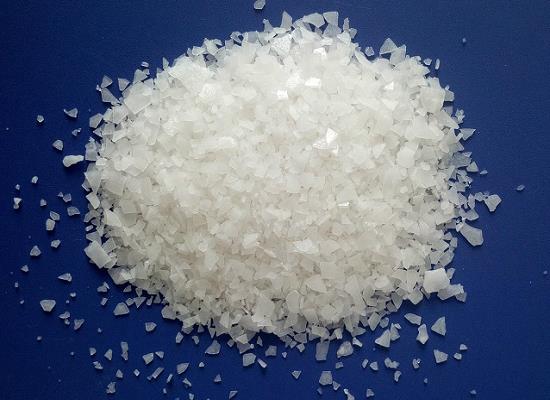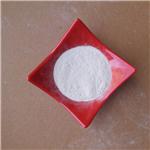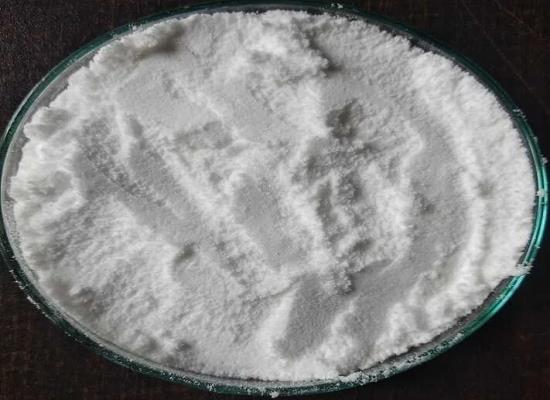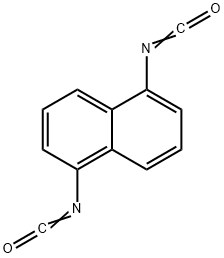1,5-Naphthalene diisocyanate: Preparation, Applications as a Building Block and Health Hazards
Mar 28,2024
General Description
1,5-Naphthalene diisocyanate is prepared using an aqueous phase salt-forming process with a high yield of 97%. The preparation involves several steps including the addition of 1,5-naphthalenediamine and water, followed by the introduction of nitrogen gas and heating to 90°C-100°C. Hydrochloric acid is added to form a synthetic solution, which is then centrifuged to separate solid from the mother liquor. The dried solid is combined with a solvent in a reaction kettle, and phosgene gas is introduced to obtain 1,5-naphthalene diisocyanate. 1,5-Naphthalene diisocyanate serves as a crucial building block for high-performance polyurethane elastomers, offering superior mechanical and chemical properties compared to MDI- and TDI-based elastomers. However, 1,5-Naphthalene diisocyanate poses significant health hazards, causing occupational asthma and respiratory issues, emphasizing the need for strict safety measures in environments with potential exposure.

Figure 1. 1,5-Naphthalene diisocyanate
Preparation
1,5-Naphthalene diisocyanate is a compound that can be prepared using the aqueous phase salt-forming process, resulting in a high yield of 97%. The preparation process involves several key steps. Firstly, 1,5-naphthalenediamine and water are added to a still, and nitrogen gas is introduced. The solution is heated to 90°C-100°C, and hydrochloric acid (HCl) is added to the mixture until the concentration of 1,5-naphthalenediamine reaches a set value, forming a synthetic solution. Next, the synthetic solution is centrifuged to separate centrifuged solid from the mother liquor. The solid is dried, while the mother liquor is recycled back to the initial step for further synthesis. In the final step, the dried centrifuged solid is combined with a solvent in a reaction kettle, and phosgene gas is passed into the mixture. After a specific reaction time, a synthetic liquid containing 1,5-naphthalene diisocyanate is obtained. This method offers advantages such as simple equipment and process, high product quality and yield, and ease of industrial implementation. By using water as a solvent, the formation of 1,5-Naphthalene diisocyanate from the reaction of naphthalenediamine with hydrogen chloride can be optimized, leading to a high salt conversion rate and reducing the generation of unwanted by-products during subsequent reactions. 1
Applications as a building block
1,5-Naphthalene diisocyanate serves as a crucial building block for the production of high-performance polyurethane elastomers. These elastomers exhibit exceptional properties and are particularly advantageous when compared to MDI- and TDI-based elastomers. The processing of Vulkollan 1,5-naphthalene diisocyanate-based polyurethane elastomers is of particular interest due to its ability to impart superior mechanical and chemical properties to the resulting elastomers. The unique structure of 1,5-Naphthalene diisocyanate enables the creation of polyurethane elastomers with enhanced performance characteristics, making them suitable for applications where MDI- and TDI-based elastomers have proven inadequate or have experienced premature failure. By utilizing NDI as a building block, manufacturers can develop elastomers with improved resilience, abrasion resistance, and durability, thereby expanding the potential applications in various industries, including automotive, construction, and engineering. In summary, the utilization of 1,5-Naphthalene diisocyanate as a building block for polyurethane elastomers enables the production of high-performance materials with superior properties, offering solutions for applications where traditional elastomers may fall short. 2
Health hazards
1,5-Naphthalene diisocyanate poses significant health hazards to individuals exposed to it, as evidenced by various case studies and research findings. Exposure to vapors of 1,5-naphthylene diisocyanate has been linked to occupationally related asthma in some individuals, particularly those working in synthetic rubber plants. This compound has been identified as a vulcanizing agent, causing respiratory issues such as asthma upon exposure. Furthermore, a case study highlighted symptoms of hypersensitivity pneumonitis and massive pulmonary hemorrhage in a 24-year-old male following occupational exposure to 1,5-Naphthalene diisocyanate. The individual experienced life-threatening haemoptysis, and subsequent examinations revealed hypersensitivity pneumonitis as the underlying condition. Chamber challenges with 1,5-Naphthalene diisocyanate resulted in adverse respiratory effects, indicating the potential for immunological pulmonary hemorrhage caused by this diisocyanate. It is important to note that even low concentrations of 1,5-naphthalene diisocyanate can trigger severe immune responses and respiratory complications, emphasizing the need for strict safety measures and protective equipment in environments where exposure to this compound is possible. 3
Reference
1. Liu Y, Bai YM, Ma XB. Preparation of 1,5-naphthalene diisocyanate by using aqueous phase salt-forming process. 2022; Patent Number: CN115536552.
2. Prolingheuer E, Lindsey JJ, Kleimann H. Naphthalene-1.5-Diisocyanate as a Building Block for High Performance Polyurethane Elastomers. Journal of Elastomers and Plastics.1989; 27(1): 100-121.
3. Merget R, Marczynski B, Chen Z. Haemorrhagic hypersensitivity pneumonitis due to naphthylene-1,5-diisocyanate. European Respiratory Journal. 2002; 19(1): 377-380.
- Related articles
- Related Qustion
- 1,5-Naphthalene Diisocyanate: Indication, Application, Preparation Apr 18, 2023
The 1,5-Naphthalene Diisocyanate (C12H6N2O2), also known as NDI. Polyurethane is one of the six largest synthetic materials in the world today.
Supplementation with pyridoxal 5'-phosphate monohydrate can synthesize neurotransmitters such as dopamine and serotonin, maintaining a healthy nervous system.....
Nov 4,2025Biochemical EngineeringAvatrombopag maleate shows potent TPO receptor activation, selective human platelet generation, and promising pharmacokinetics, supporting its development for platelet disorders.....
Mar 28,2024API1,5-Naphthalene diisocyanate
3173-72-6You may like
1,5-Naphthalene diisocyanate manufacturers
- 1,5-Naphthalene diisocyanate
-

- $0.00 / 1kg
- 2025-12-05
- CAS:3173-72-6
- Min. Order: 1kg
- Purity: 99%min
- Supply Ability: 20tons
- 1,5-Naphthalene diisocyanate
-

- $79.00 / 1KG
- 2025-12-03
- CAS:3173-72-6
- Min. Order: 1KG
- Purity: 99%
- Supply Ability: 100T
- 1,5-Naphthalene diisocyanate
-

- $0.00 / 1KG
- 2025-06-27
- CAS:3173-72-6
- Min. Order: 1KG
- Purity: 99%
- Supply Ability: 500000kg






